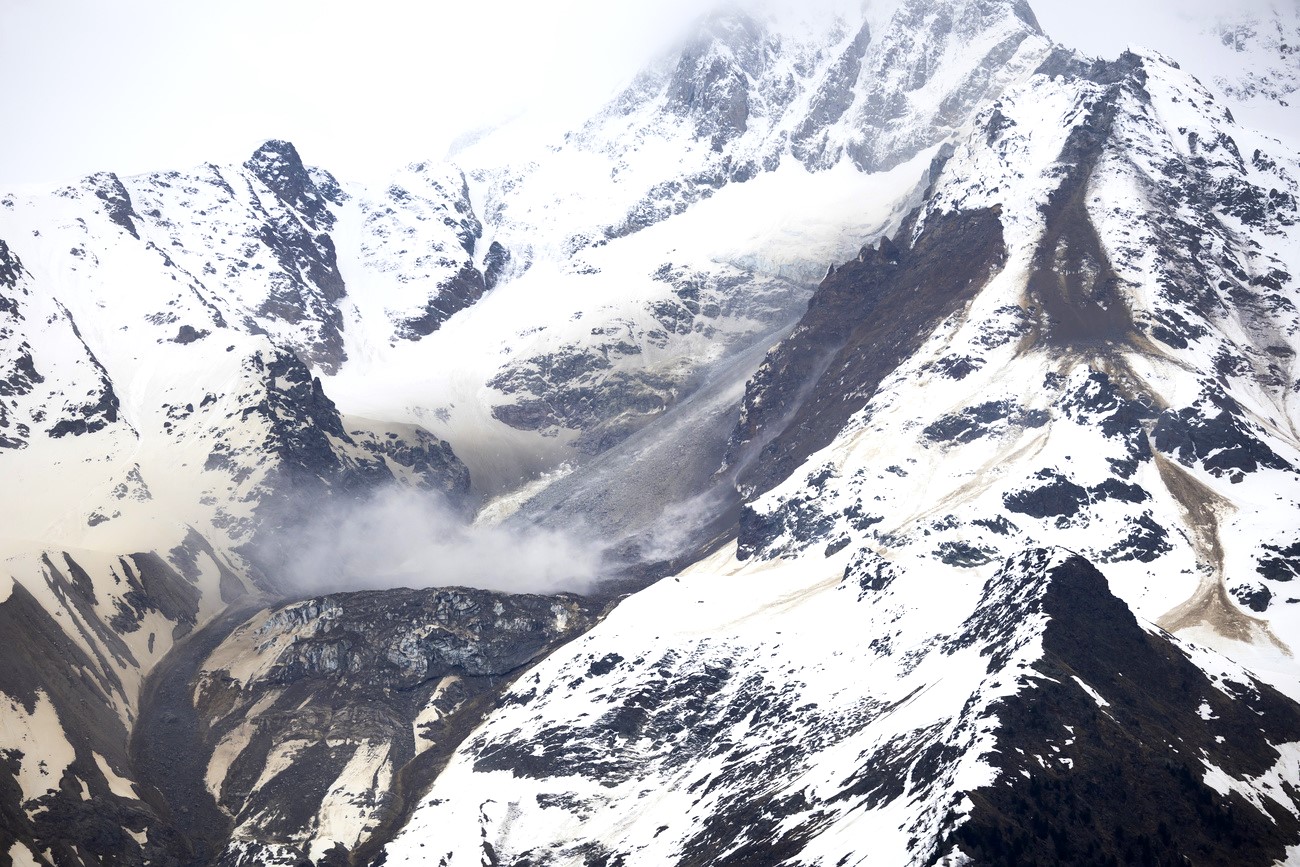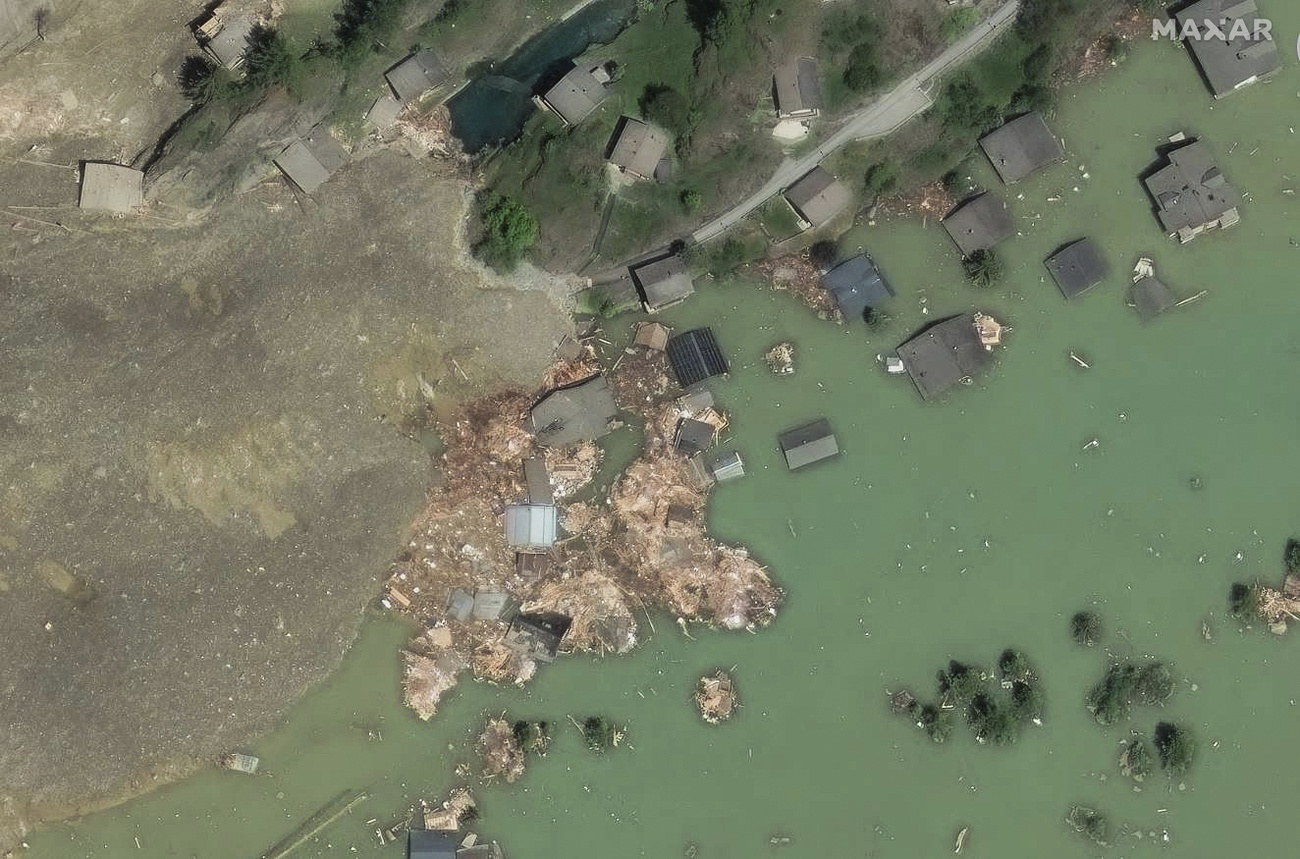
Swiss minister highlights Blatten ‘miracle’ at disaster reduction meeting

The fact that only one person is missing after the huge glacier collapse that engulfed the Swiss mountain village of Blatten last week is "almost a miracle", according to Foreign Minister Ignazio Cassis. On Tuesday in Geneva, he urged the international community to "spring into action" to tackle the problems of natural disasters.
+Get the most important news from Switzerland in your inbox
“[In Blatten, canton Valais] only one person is missing. Given the brutality of the event, this is almost a miracle,” Cassis told 4,000 participants at the eighth meeting of the Global Platform for Disaster Risk Reduction in Geneva on Tuesday.
The Swiss minister called for greater investment in prevention, based on science. Swiss parliamentarians also want more resources to combat natural hazards. Switzerland spends CHF2-3 billion a year on disaster risk reduction at home and CHF250 million abroad.

More
Melting permafrost threatens mountain regions. What can be done?
Increased spending at home would not necessarily be at the expense of efforts to support developing countries.
“I don’t think we should pit the two against each other,” Patricia Danzi, head of the Swiss Agency for Development and Cooperation (SDC), who is co-chairing the meeting in Geneva, told reporters. And when it comes to financing reconstruction, “Switzerland has expertise that we want to share” with countries that have not set up a mechanism, she said.
Warning to rich countries
The Blatten landslide could have “cost an immeasurable number of lives”, said Amina Mohammed, Deputy Secretary-General of the United Nations. It was “an important reminder” of the effectiveness of early warnings, but they “cannot prevent glaciers from disappearing”, she said, calling for greater efforts to combat climate change.

More
Why do Swiss mountains collapse? It’s complicated
“Political will has fallen far short of what is needed” in the fight against global warming, Mohammed told reporters. In all, 35 countries that account for nearly 85% of greenhouse gas emissions can make a difference, she said. And “we will then have less to spend on what we are confronted with on a daily basis with these enormous disasters”, she added.
On Monday, the Secretary General of the World Meteorological Organisation (WMO), Celeste Saulo, established a link between the glacier collapse and climate change. She said Blatten was “a powerful warning” that the world was “warming up”.
A long way off
In disasters, “the human footprint is very much present, not in the brutality of the immediate attack, but in a form of chronic negligence”, said Cassis.

More
Flood risk threatens Swiss valley after ‘millennium event’ glacier collapse
The Swiss foreign minister added that the international community was still “a long way from achieving the seven objectives set” for 2030. Whether in terms of reducing human losses, limiting economic damage or ensuring that all states have access to early warnings. Despite progress in recent years, only 108 countries have such a system.
The WMO has been tasked by the UN Secretary General with an initiative to improve this situation. According to the Cassis, reducing the threat of disasters must form part of public policy.
Huge costs
The Swiss minister also stressed the importance of local authorities. The international community cannot replace “national and local responsibilities”, he noted. The people must be at the centre of the efforts being made, said Cassis.
Natural disasters around the world are becoming increasingly costly. According to a UN report published last week in Geneva, losses reach more than $200 billion a year, and even nearly $2,300 billion if indirect effects are taken into account.

More
The seven worst landslides in Swiss history
And the rich countries are largely affected, insists Mohammed, who has called on the various states to take urgent action as extreme situations increase. The problem is that prevention accounts for only 0.5% of disaster funding. Yet $1 invested saves 15 later on.
More than 170 countries and dozens of heads of state and ministers are expected to attend the ongoing meeting in Geneva until Friday. The aim is to assess the efforts that still need to be made in order to meet the target date of 2030. Alongside the UN, Switzerland is due to publish a final document with recommendations.
What is your opinion? Join the debate:
Translated from French by DeepL/sb
We select the most relevant news for an international audience and use automatic translation tools to translate them into English. A journalist then reviews the translation for clarity and accuracy before publication.
Providing you with automatically translated news gives us the time to write more in-depth articles. The news stories we select have been written and carefully fact-checked by an external editorial team from news agencies such as Bloomberg or Keystone.
If you have any questions about how we work, write to us at english@swissinfo.ch

In compliance with the JTI standards
More: SWI swissinfo.ch certified by the Journalism Trust Initiative




























You can find an overview of ongoing debates with our journalists here . Please join us!
If you want to start a conversation about a topic raised in this article or want to report factual errors, email us at english@swissinfo.ch.